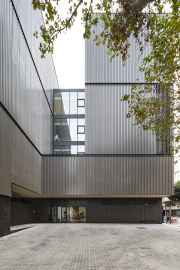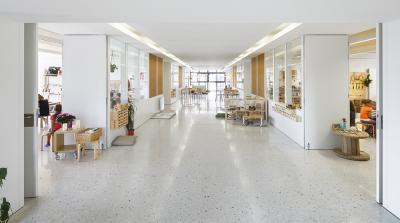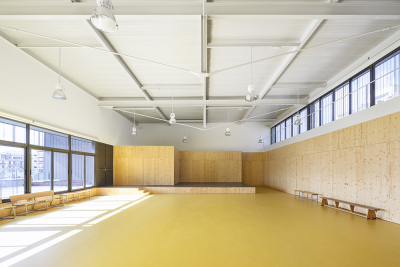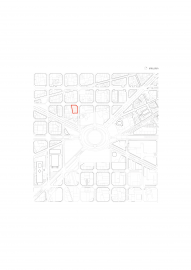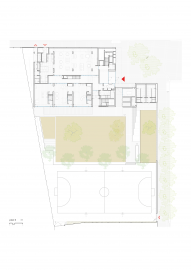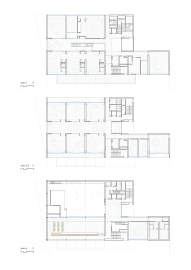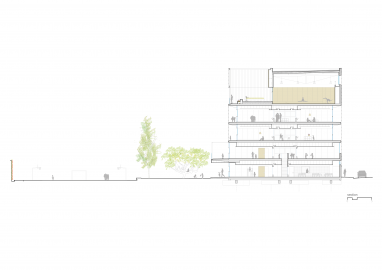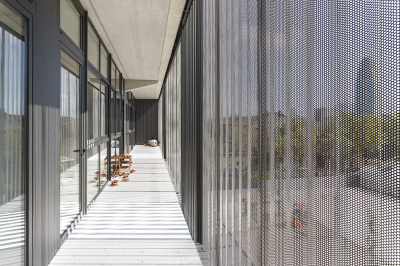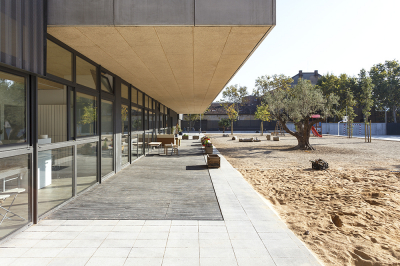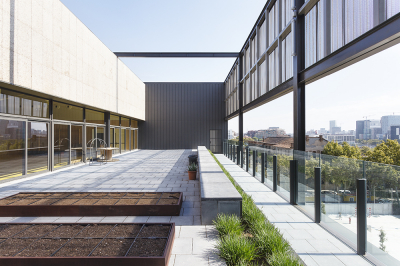Encants School
A school with a pilot teaching project in public school system. The Glòries area, currently being transformed, pushes the building to respond to the urban scale and bursts in inevitably, in advance of the development of the final planning. Inside, neutral spaces that are open and bright create an atmosphere that promotes exchange and learning.
The school has a unique teaching project, part of a pilot program for the entire Barcelona public school system. It is located in the area around Plaça de les Glòries, currently undergoing transformation, which is full of potential.
The approach makes it necessary to plan a vertical school (ground floor + 4). The size of the plot lends itself to optimising the space allocated for a spacious courtyard and constructing outdoor areas within the built volume.
The school is organised by floors, grouped two by two. On the ground and first floors, we find the public part of the program and the preschool classrooms. On the second and third floors, the primary school classrooms on either side are linked by a central open area to house educational activities that go beyond traditional classrooms. Open spaces are planned to stimulate students’ mobility through the different learning settings.
The school is located in a post-industrial urban area on the edge of Barcelona’s Eixample, currently awaiting definitive planning for the Glòries area. The dispersal of the city and the lack of local references led us to take a forceful approach in terms of the building’s volumes and an abstract take on language.
The façade, made from perforated sheet metal, evokes a past of industries and small workshops, and lets us create a permeable filter between the classrooms and the city, between the school’s activities and the street. It also serves to soften the direct sunlight and create high-quality lighting that heightens concentration and is, therefore, favourable to learning.
The classroom area generates a central space for communication and interchange, which connects to the outside through the open and permeable classrooms, thanks to the wide glazed surfaces. The interior finishes provide the school with luminosity, neutrality and transparency and help encourage the institution’s commitment to a teaching model based on promoting and accompanying children’s curiosity and favouring their relationships with classmates and their surroundings.
On the façade, the use of large steel panels provided the building with a clear-cut urban scale, while simplifying the assembly and later maintenance. This latter aspect was present in all of the design decisions; in this respect, we chose materials with a long useful life or elements that could be easily repaired.
The building has a high thermal performance envelope through the use of a ventilated façade with continuous exterior insulation, while a waterproof membrane enables transpiration. The roofs also ensure a thermal insulation coefficient that is much higher than that required by regulations.
Given the characteristics of the subsoil, the weight of the building was reduced as much as possible to avoid the need for a deep foundation. The building consists of a double block connected by a central space with porticoes every 7.5 metres to adapt to the dimensions of the classrooms. The classroom spaces are covered by one-way slabs based on lightweight concrete shuttering slabs, while a solid slab that ties the whole complex together covers the remaining spaces.


